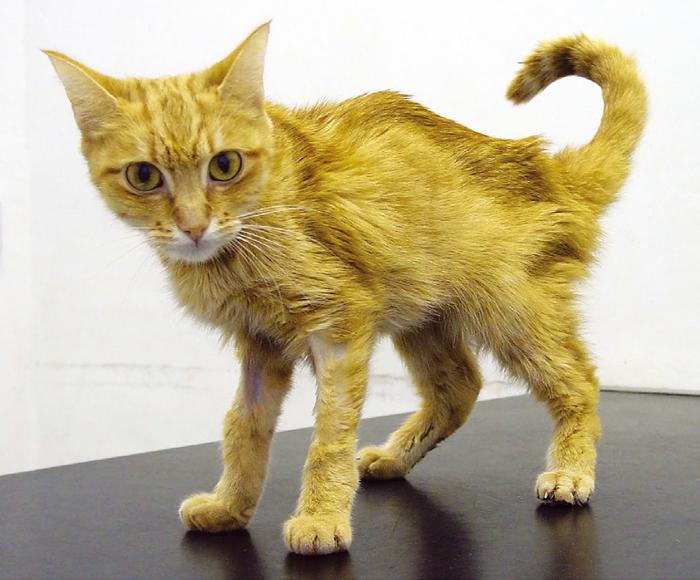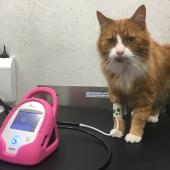Kidney disease in your cat causes, symptom and treatment

Kidney disease in your cat
A prevalent health issue among middle-aged and older cats is kidney failure. An inherent aspect of aging is a progressive decline in the kidneys' capacity to function, which happens at different rates in different species. The harm is permanent and will ultimately result in death. If your cat receives efficient treatment and you work with your veterinarian, they may still have many months of healthy life after being diagnosed with renal illness.

What causes kidney damage?
Normal aging involves damage to the cells that remove natural toxins (the waste products of the body's internal functions) from the circulation and deposit them in the urine of the cat. Over time, the damage to kidney tissue becomes so severe that the waste products accumulate in the bloodstream and are unable to be removed.
Cats older than seven years old frequently suffer from this illness, which is known to veterinarians as chronic renal failure. Damage can be exacerbated by poisoning, the development of malignancies, bacterial infections, viral illnesses like feline leukemia or feline infectious peritonitis, inherited abnormalities (especially in long-haired breeds).
In addition, poisoning, bacterial and viral infections, obstruction of the tubes that carry blood from the kidneys to the bladder, and heart disease can all result in abrupt or severe kidney failure. Even if your veterinarian treats these conditions successfully, your cat may still experience long-term renal damage. This is why emergency care is necessary.
Causes of Kidney Disease in Cats
Kidney disease can be caused by a variety of factors, including:
- Age: Older cats are more prone to developing kidney problems.
- Genetics: Certain breeds are genetically predisposed to kidney disease.
- Diet: Poor-quality diets high in phosphorus and low in moisture can contribute to kidney issues.
- Toxins: Exposure to certain toxins, such as antifreeze, can severely damage the kidneys.
- Infections: Chronic kidney infections can lead to kidney damage over time.
What happens to a cat with kidney disease?
Because the kidneys can filter blood with great spare capacity, symptoms don't show up until around 75% of the kidney cells are dead. The inability to generate concentrated (black) urine is one of the earliest signs of illness. Your cat must therefore make more pee that is more diluted in order to eliminate the same amount of waste. Your cat may need to urinate more frequently and will be more thirsty than usual. As the illness worsens, other symptoms could manifest. Your cat could exhibit depressive symptoms, such as losing interest in food, vomiting frequently, losing weight, and having a dull coat. Its mouth may also have sores and foul breath. When the illness reaches its most advanced state, your cat can lapse into a coma.
Type and stage of kidney disease
How can I be sure that my cat has kidney disease?
Many of these symptoms also occur in other diseases such as diabetes. Your vet will want to test samples of blood or urine or perform X-rays or ultrasound examination of your cat to show that the kidneys are not working properly.
Symptoms of Kidney Disease in Cats
Recognizing the signs of kidney disease is crucial for early intervention. Common symptoms include:
- Increased thirst and urination: Cats with kidney disease may drink and urinate more frequently.
- Weight loss: Despite a good appetite, cats may lose weight.
- Poor coat condition: The fur may appear unkempt and lackluster.
- Vomiting and diarrhea: Cats may experience gastrointestinal issues.
- Lethargy: A decrease in activity levels and overall energy.
- Bad breath: An ammonia-like odor in the mouth can indicate kidney problems.
How is kidney disease treated?
There are many things you can do to help your cat feel better, even when damaged kidneys cannot be restored. A lot of cats that urinate excessively frequently suffer from acute dehydration. In order to combat this, your veterinarian may want to administer more fluids as well as medication to treat the disease's side symptoms, which include stomach and mouth ulcers. Kidney or bladder stones may result from damaged kidneys' inability to eliminate waste materials from the body. In cats with advanced disease, anemia is a prevalent issue that can be addressed in certain cases.
Once diagnosed, managing the disease focuses on several key aspects:
-
Dietary changes: Specialized kidney diets that are low in phosphorus and high in quality protein can support kidney function. These diets are available in both canned and dry forms.
-
Fluid therapy: Providing adequate hydration is crucial. Cats with kidney disease may require subcutaneous fluids administered by a veterinarian to maintain hydration levels.
-
Medications: Medications such as phosphorus binders, anti-nausea drugs, and medications to lower blood pressure may be prescribed based on the specific symptoms and stage of the disease.
-
Regular veterinary check-ups: Monitoring kidney function through regular veterinary visits helps in assessing the progression of the disease and adjusting the treatment plan accordingly.
-
Home care: Cat owners can support their pets by ensuring they have access to fresh water at all times, feeding them a balanced diet, and administering medications as prescribed.
What can I do to help?
Reducing the strain on the renal tissue that is still healthy is crucial to your cat's care. You can achieve this by changing your cat's food. Your veterinarian can provide specific diets that lower the blood waste products. They also have higher concentrations of certain minerals and vitamins. Remaining food or treats should not be given to your cat as they could conflict with the new diet. Cats that are affected frequently feel ill and lose interest in eating. To aid your cat's sense of smell, you might warm up the food or give it to it by hand while it adjusts to the new meal. Give it 'small and often' meals, discarding those that are uneaten. Ensuring that your cat has access to clean, fresh water at all times is crucial, as letting them go without water will exacerbate the issue quickly.
How long will my cat live?
After a diagnosis, your cat may live for several years if the kidney disease is linked to aging. Similar to other illnesses, your cat has a reasonable chance of surviving for several months if you can provide it with comfort. Your veterinarian will need to examine your cat on a frequent basis and may need to adjust its medication. Your cat can help control the disease if you weigh it frequently, observe its behavior, and record how much food and water it consumes. These actions will also give your veterinarian important information.
Conclusion
Kidney disease in cats is a serious and often progressive condition, but with early detection, proper management, and attentive care, affected cats can lead comfortable lives. Regular veterinary check-ups, a balanced diet, and a supportive home environment are essential in helping cats with kidney disease maintain their quality of life for as long as possible. If you suspect your cat might be showing symptoms of kidney disease, consult a veterinarian promptly to begin the necessary diagnostics and treatment.



